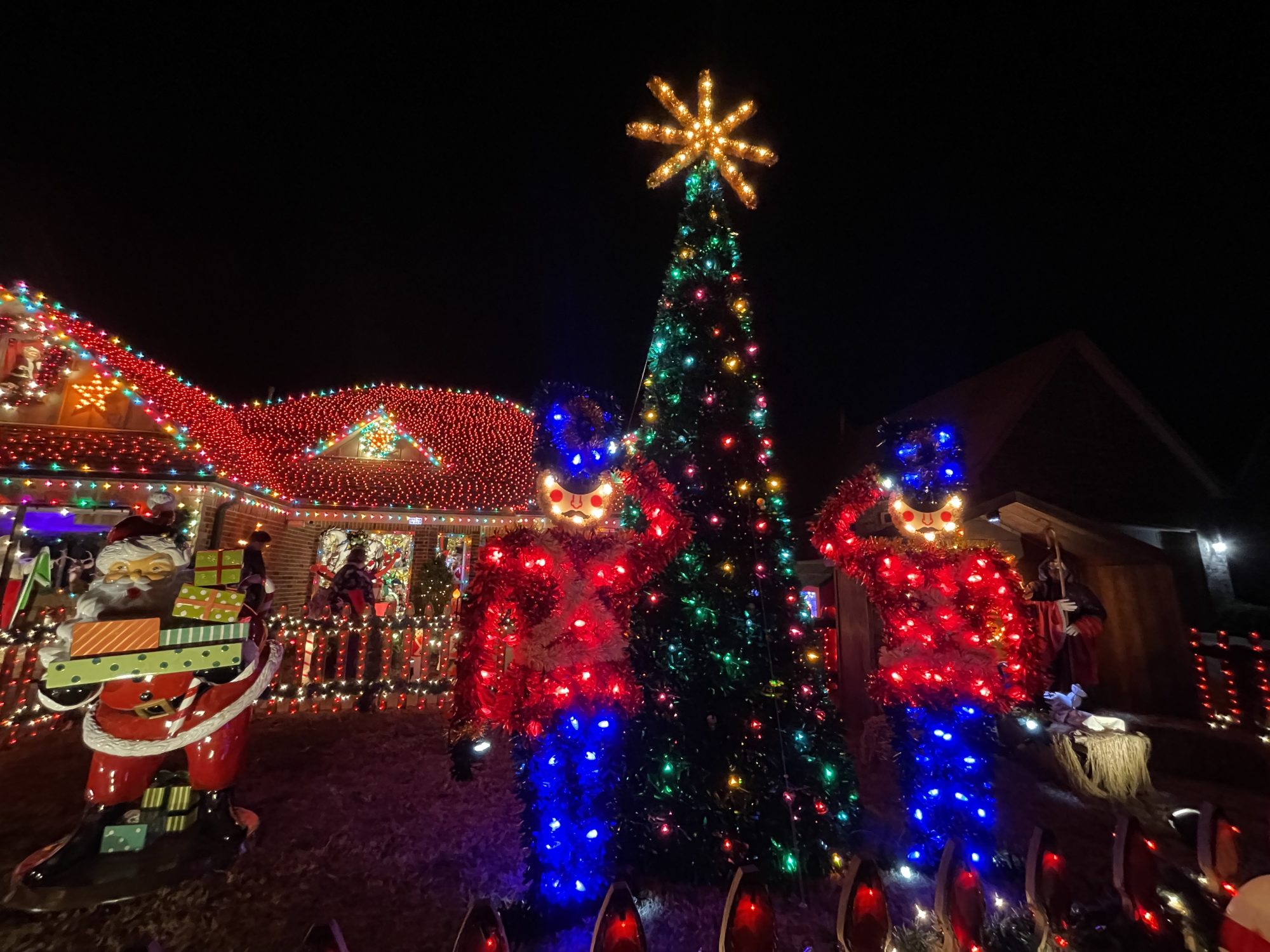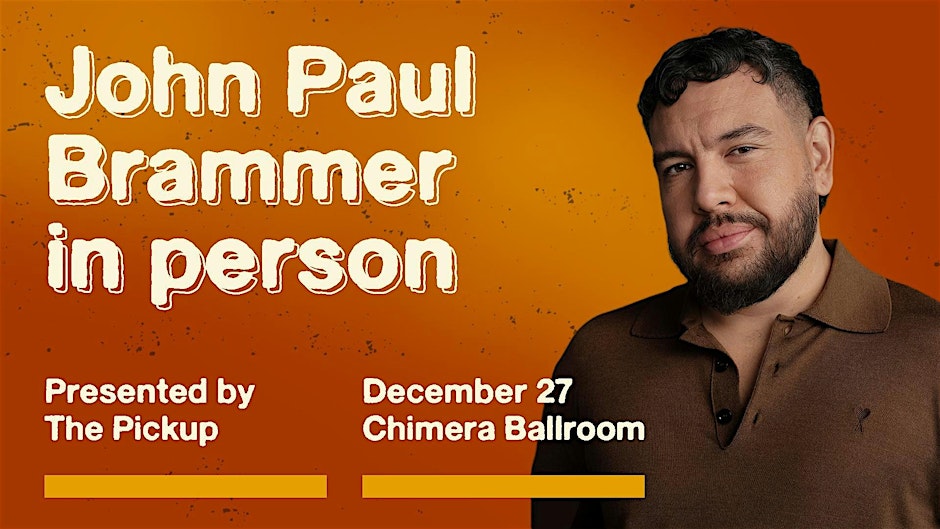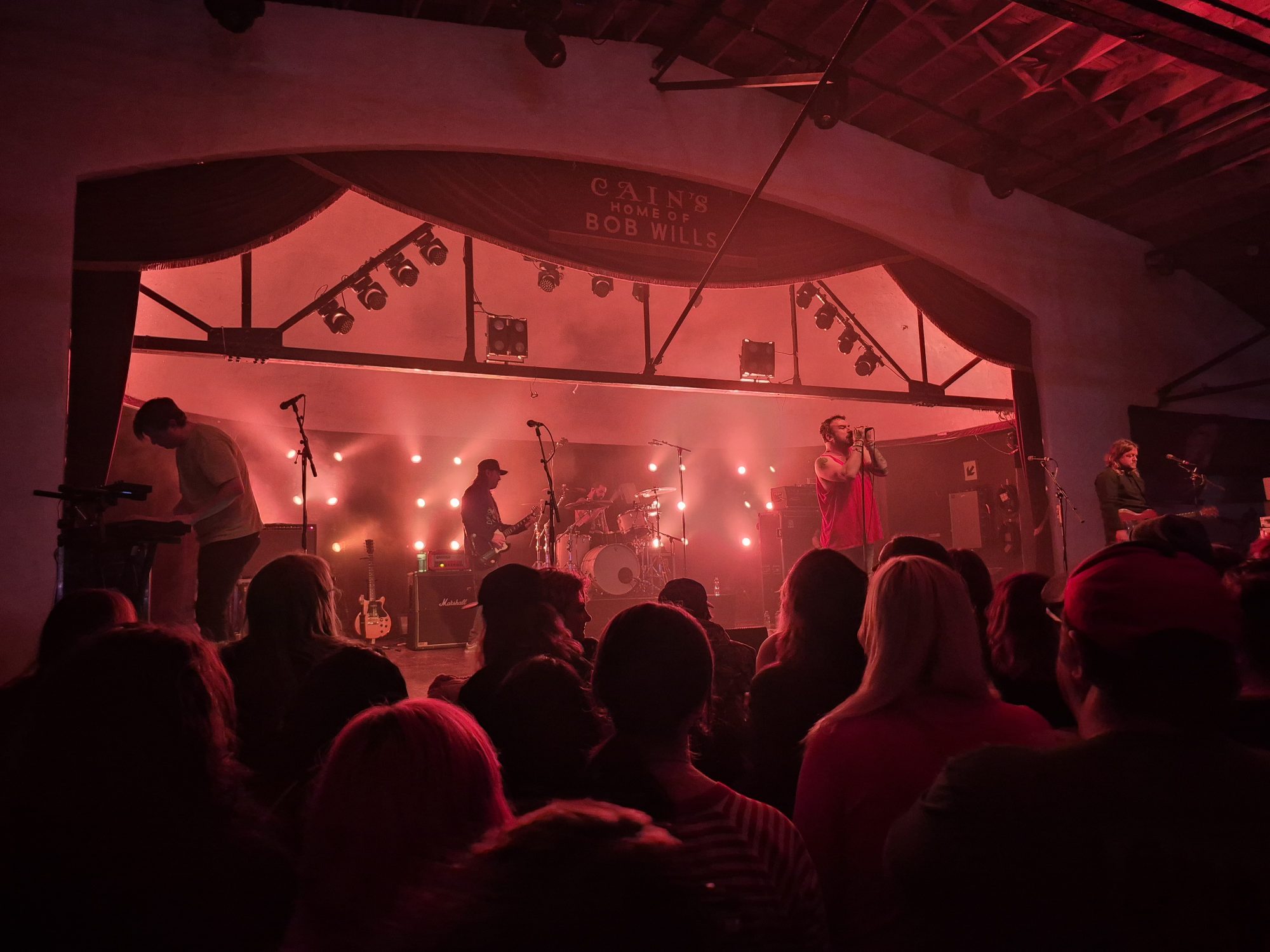Ensemble Dal Niente
University of Tulsa
April 4, 2025
One sign of a culturally competent city is that you can find your own weird special interests represented in a given month’s creative offerings, alongside all the stuff that has a broader common denominator. Does the city have a major concert hall … and multiple D&D groups? Can you get that specific Japanese dish you’ve been dying to try? Is there incredible next-level burlesque going on? Film noir? Pedal steel? Whatever?
Tulsa is, to some degree, a city like that—where you’re pretty likely to find people who are doing the thing you love or, if not, where it’s possible to pull together a few like-minded folks and start your own niche-obsessive group. If nothing else, you can get your thing professionally delivered, as long as there are organizations around with the funds and the will to bring it in from out of town.
I’ve got a few super-specific art interests along these lines, and one of them is experimental chamber music. (No idea how this developed; just picture me as a teenager poring over ECM Records catalogs in my bedroom.) If you’re a fan of Caroline Shaw or the JACK Quartet or musique concrete or John Cage, you’re almost there—just a little further and you hit my sweet spot. It’s slim pickings for pro-level, cutting-edge classical music like that here, though Chamber Music Tulsa sometimes brings in performances that range in that direction, and locally-based artists like Dave Broome can regularly be heard probing those domains.
Enter the University of Tulsa—because what is a university if not a hub for the supercharged pursuit of niche interests? As part of its visiting artist residency series, TU’s School of Music brought an ensemble to town last week that had a little pod of local musicians, students, and music-lovers actually jumping up and down with joy at the end of the concert. (Against every indicator, I still hold that we are cool.) Our itch had been scratched, Tulsa’s cultural competency affirmed, and hope restored that we might get this kind of thing a little more often in the future, the way people in Chicago and New York do.
Ensemble Dal Niente (the name is Italian for “from nothing”) is a Chicago-based collective of 27 musicians who specialize not just in experimental chamber music, but in very, very new and difficult experimental chamber music. This is music where, in a given concert, you might catch someone playing a water bottle, making whistling sounds while rubbing a thumb down a string, strapping rubber bands to a giant drum, or warping the sound of a gong by lowering it into a plastic bowl. All of which happened at TU’s luxe and intimate Meinig Hall last week—in addition to some of the most virtuoso harp, flute, and percussion playing I’ve ever heard in Tulsa.
It’s easy for music like this to come off as pretentious: self-indulgent, intentionally obscure, difficult for the sake of being difficult. This did not. It sounded like people playing with each other, in the way that I imagine physicists might play through equations. (All of the musicians and composers on this program have advanced degrees in music and are recognized globally for their expertise.) A decade ago, the New York Times described the ensemble as offering “intense whimsy,” and that absolutely holds.
Many of my notes about this concert have to do with some kind of motion. “A thup like a closing door.” “A voice breaks through from somewhere unseen.” “He scrapes the guiro so fast that individual sounds disappear and become … waves??” In the hands of the three Dal Niente musicians who performed in Tulsa—Kyle Flens (percussion), Ben Melsky (harp), and Emma Hospelhorn (flute/bass flute/piccolo)—instruments became textures to be touched, spaces to be navigated, bodies to be shifted in relationship to each other and the audience. This is music that flies beyond melody, harmony, rhythm, or linear sense-making. It’s kinetic.
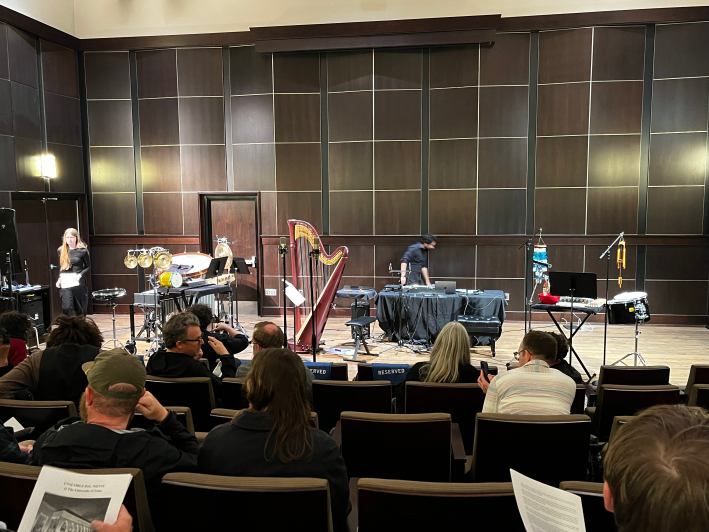
A duet for Flens and a sock-footed Melsky (anima by Igor Santos, 2019) opened the concert with delicate tastes of things to come: a dialogue in taps and bongs and cartoon bird whirrs, sighs and groans and rasps: sounds that came in hilarious quick succession and kept me on my toes. A solo for Hospelhorn (Dances of the Black Sea by Füsun Köksal, 2013) followed—11 extraordinary minutes of breath and embouchure control becoming sounds of diaphanous sea spray, taut seagull calls, bitter wind, and spiral jetty spins. I don’t think I blinked through the whole thing.
Two pieces by Alican Çamcı—who currently teaches at TU and is a friend of the Dal Niente collective—bookended a short intermission. He wrote the first, perdu, for Hospelhorn and Melsky in 2016; he created the second, harp close-up, for Melsky just last month, and this night was its world premiere. Çamcı’s compositional strategies (detailed in the exceptional program notes; bless you, university people) are complex, associative, and full of an absurdist wit that quickly becomes depth. He sometimes anchors those strategies in non-musical ideas: poetic meter and textual transmission over time in the subtle and haunting perdu, or the action of a screen-scrolling thumb in harp close-up.
In the latter piece, Çamcı linked that scrolling action (which, he writes, he’d fixated on while looking online for audio cables for this performance) to the gesture that makes a musical glissando, the harp’s signature sound. Then he upped the ante by putting a GoPro on Melsky’s head and having him look down, up, and around the concert hall as he played, capturing a visual representation of the glissando movement as Çamcı captured the notes of the harp into a laptop. Both sounds and visuals got more layered, more reminiscent of digital overwhelm, as they fed back through themselves through speakers and onto a projector screen. By the end of the piece, Melsky was no longer “playing” at all, yet we heard the sweep and purr of vibrating strings as we gazed with him at the screen into a feedback wormhole of blue rectangles. All that remained was the sonic contrail of our time together and the recurring shape of the screen itself.
The dissociative yet addictive experience of infinite scroll, experienced through music? The solo effort that delivers an eerie sense of togetherness, just like you get when you’re chronically online? The quiet, funny, and commanding harp close-up delivered exactly the sort of curious, sensitive creative stroke that draws me to this kind of art. It radically disoriented me, then offered a different kind of orientation around something I’d only thought I had a handle on.
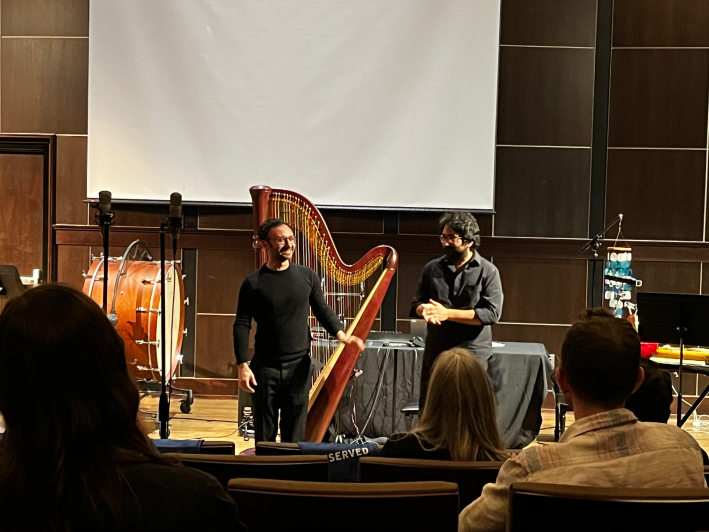
Dal Niente wrapped up the evening with Hannah A. Barnes’ 2021 Ramification (a solo for Kyle Flens, tracking resonant sonic pathways among half a dozen percussion instruments) and Tan Dun’s 1987 In Distance, the most recognizably “contemporary classical” work on the program, full of conversations among instruments speaking in tones they seemed surprised to be able to make. (The fact that, by this point in the show, I was hallucinating instruments having consciousness is maybe the strongest recommendation I can make that you seek out music like this.) Maybe my favorite moment of the concert: Flens standing still for what seemed like minutes at the end of Ramification, his attention—and thus ours—fully focused on two sets of wind chimes he’d set in motion together, listening as they slowly surrendered from sound into silence.
The Pickup's reviews are published with support from The Online Journalism Project.




